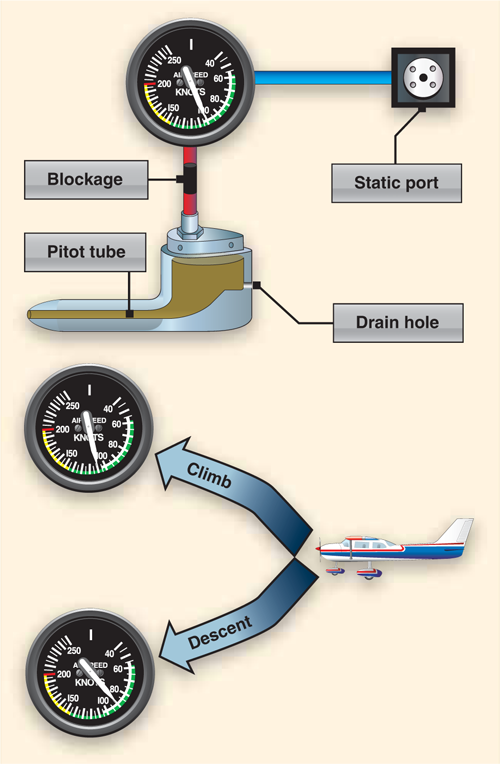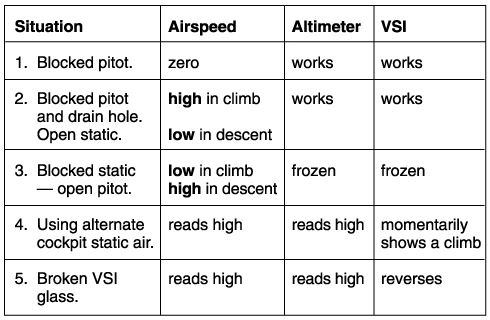Today we will finally wrap up our three part post on the pitot-static system and related instruments with a quick discussion on errors. If an error is noted on one of the three pitot-static instruments it is almost always caused by either a blockage in the pitot-tube or one of the static ports. As we’ve discussed previously part of you pre-flight preparation is to check the condition of both the pitot-tube and static port to verify each is free and clear of any visible debris or blockages like moisture, dirt, or insects. Blockages may not always be visible to the naked eye so it is important to also perform an instrument cockpit check. On the ground the ASI should indicate zero, VSI should indicate near the zero line, and the altimeter should indicate approximate field elevation when set to the current local altimeter. Remember a blocked pitot-tube will only affect the accuracy of the ASI while a blocked static port will affect all three instruments.
Because the pitot-tube has two openings (ram air inlet and drain hole) you can experience either a complete or partial blockage each affecting the ASI differently.
Ram air blocked, drain hole clear—Air already in the systems vents out the drain hole and the pressure becomes ambient (equal to the pressure outside). Because no difference in pressure is noted between ram and static the ASI will indicate zero.
Ram air and drain hole blocked—Pressure inside becomes trapped and no change will occur if airspeed is increased or decreased. However if the static port is still functioning and you change altitude then the ASI will indicate an increase of airspeed with a climb and decrease of airspeed with a descent (see figure 1). This is a result of the static air pressure changing against the trapped impact pressure which remains constant.

The static system will cause errors in all three instruments if a blockage occurs.
Static blocked pitot-tube clear—ASI will function, however, inaccurately. If a climb is made above the level of where the static port blockage occurred then the ASI will indicate an airspeed lower than actual. If a descent is made below the altitude where the blockage occurred then the ASI will indicate airspeed higher than actual.
Static blocked—Altimeter will freeze at the altitude where the blockage occurred. The VSI will indicate a continuous zero.

As we have already learned the majority of aircraft are equipped with an alternate static source located within the cockpit in the event of a system failure. It is important to remember pressure inside the cockpit is lower than pressure outside so there will be variations and some inaccuracy to the indications shown on the instruments. The pilots operating handbook will typically list corrections when using alternate static air.
This sums up our three part series on the pitot-static systems. If you should have any questions please feel free to leave them in the comments section below or send us an email.




